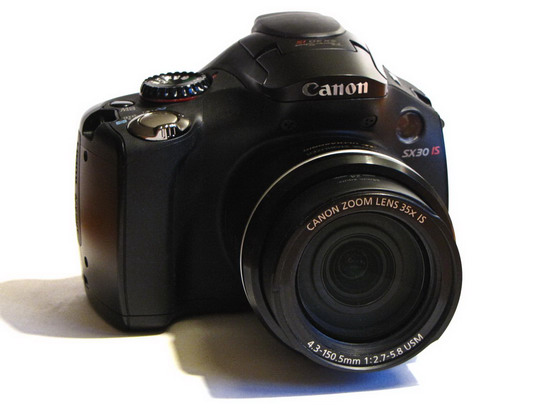Camera Upgrade – Hello Canon Powershot SX30
This may come a bit out of the blue – I’ve got a new camera! I’ve been using the Powershot SX1 since November 2014 and I’ve been really happy with it, but in the last couple of weeks it has developed some problems with the lens motor, producing occasional errors which could get more serious over time. So I decided to upgrade and found a perfect replacement on eBay: a practically new Powershot SX30 with lots of accessories for slightly less than €100. Although the SX1 still works, I wanted to upgrade anyway and while I’m still getting acquainted with the SX30a, it really feels like a substantial upgrade over its already great predecessor. While it’s not the newest model and already a couple of years old, it’s still a very powerful camera and as long as it works, I expect to use it over the next couple of years.
The biggest upgrade is, of course, the lens from 20x to a 35x zoom, bringing the focal range up to 840mm in “big camera” terms and together with the 14.1 megapixel sensor there’s a lot of resolution to play around with. The first photos at the amazing 4320×3240 resolution look absolutely fantastic and much less noisy than on the SX1. The display has the same 2.7 inches diagonal as the SX1, but it’s 4:3 instead of 16:9 and is actually larger, sharper and brighter. At the same time, the SX30 is about 100g lighter than the SX1, probably because it uses proprietary battery packs instead of four heavy AA batteries – at first I was reluctant to switch to a camera with its own batteries, but I got two well-working ones with my camera and ordered a third fresh one, which was actually less expensive than four high-capacity AA rechargeables.
The SX30 also supports the CHDK Firmware addon, which I’ve installed immediately and allows saving in RAW format, long-time exposures, running scripts, custom display and much more. It looks like the SX30 can do at least 300 seconds exposures, although I haven’t fully tested it and don’t know yet how much sensor noise this will produce. The RAW feature can save either in Canon’s own format or in Adobe DNG, although the camera does quite a lot of post-processing and the RAW really looks raw without barrel distortion, colour correction and cropping. It saves the full resolution of 4456×3268 and the shadow of the lens barrel is actually visible in the corners, but the RAW support still very useful and the processed JPEGs are always saved too.
There are no major downsides to the camera, only one mild annoyance: Canon has removed the versatile panorama stitch assistant which used to work in all directions and now only supports horizontal panoramas, but I guess I have to learn how to shoot my panoramas manually now. The camera also “only” shoots 720p video instead of 1080p, but that’s actually fine with me because I can edit 720p better on my old computer and I’m not planning on shooting much video anyway.
Everything else is just about perfect on the SX30 and while I’m keeping and perhaps occasionally using the SX1 as a backup, I’ll use the new camera as my primary one from now on. Most photos I’m posting right at the moment are still shot with the SX1, but the occasional more current photo taken with the SX30 might come up once in a while.



